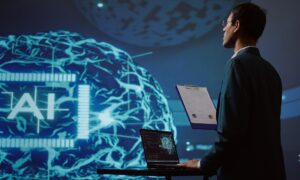Quality assurance plays a quiet but powerful role in healthcare. Behind every approved medical device is a professional who examines every detail and makes sure patients stay safe. As technology reshapes the healthcare environment, the responsibilities of QA professionals are changing. One leader in this evolving space is Shashank Murali. He is a well respected QA specialist based in Minneapolis, working to make sure medical products meet strict requirements before they reach those who depend on them. He brings experience in risk management and product validation while staying focused on the human impact of his work.
Shashank entered this field with a clear purpose. In college, he discovered a strong interest in both engineering and healthcare. He realized that medical devices can significantly change patient outcomes when they are designed and monitored with care. That connection between technology and patient safety pushed him into a career path where his decisions would protect people. Today his role is more critical than ever. Medical devices are advancing through smarter sensors, digital connectivity, and automated functions. Hospitals and clinics rely on them to diagnose, treat, and monitor millions of patients each day. This progress introduces new responsibilities for QA and raises new questions about long term safety.
The changing role of QA in healthcare technology
Medical device safety once focused mostly on the hardware. QA teams tested structure durability, performance, and dependability. As digital capabilities expanded, devices became more complex. Software joined hardware, connectivity joined processes, and data became a key part of product success. This shift is reflected in global regulations. Agencies are increasing oversight on software risk, including updated validation expectations from the US Food and Drug Administration. These guidelines show a future where testing is broader and cybersecurity becomes part of routine product checks. For Shashank this means his work stretches further into the product lifecycle. Teams must examine products from concept to release. That approach aligns with his daily focus on detailed reviews and strong communication between engineering, compliance, and regulatory partners.
Predictive thinking and early risk identification
Device failures can create serious consequences. Shashank learned this early in his career when his team discovered a flaw in a product used in critical care. Addressing the issue prevented a major patient risk and shaped how he approaches his work today. Quality assurance will depend more on predictive tools in coming years. Data analysis and automated pattern recognition can detect concerns sooner, reducing recalls and delays. These technologies support QA teams by giving them clearer insight into performance trends before they become problems. Shashank continues to build new skills in risk analytics so he remains ready for the next stage of the industry.
The growing focus on compliance and global standards
Healthcare products must follow strict requirements before they can be sold. These rules evolve as technology changes. In recent years guidelines have expanded documentation expectations and introduced stronger oversight of digital systems. QA teams are responsible for confirming that products and updates meet these changing standards. Shashank has strong experience with compliance frameworks and often collaborates with regulatory teams to keep processes aligned with global standards. Compliance affects more than approval. Patients and care providers must trust that products will work as promised every time. Quality assurance protects that trust.
How Shashank supports quality throughout the product journey
A typical workday for Shashank includes project reviews, risk assessments, and supporting team alignment. He prioritizes tasks based on patient impact and ensures that concerns receive immediate attention. Clear communication helps prevent delays and keeps the whole team informed. When new projects begin he brings everyone together to agree on requirements and progress expectations. Mentorship is another part of his approach. His own career was shaped by leaders who encouraged growth and resilience, so he works to pass those values on to rising professionals.
The rise of automation in QA
Automation is becoming a significant part of medical device validation. Testing tools can repeat tasks with precision while allowing experts to focus on advanced decision making. Shashank stays current by attending conferences and completing training throughout the year. These tools improve efficiency and reduce human error, helping safe devices reach patients sooner. The challenge is making sure automation remains transparent and accountable. QA professionals like Shashank must decide where digital systems provide support and where human judgment remains essential.
Strengthening healthcare access through better devices
Quality assurance work supports public health in many ways. Shashank has contributed to projects that helped underserved communities access reliable diagnostic tools. Seeing the result of that work is one of his proudest experiences. When devices are dependable they expand care to populations that might otherwise go without safe treatment. QA ensures that access does not mean a compromise in safety.
Building the future workforce in QA
Next generation QA roles will require strong data skills, cybersecurity awareness, and the ability to collaborate across several specialties. Shashank encourages students to seek mentors, embrace challenges, and continue learning throughout their careers. His own growth came from stepping outside his comfort zone and learning from setbacks. He believes the same resilience will support those who enter the industry now. The medical device field will always need people who want to protect others through accurate and responsible work.
Staying ready for the next wave of healthcare change
Healthcare technology moves quickly. Software evolves faster than physical components. Devices collect more real time data with each update. QA will need to confirm that products remain safe throughout their entire lifetime, not just at launch. Predictive analytics, automation in testing, and continuous monitoring will define the next generation of safety oversight. The focus stays simple. Protect patients and ensure products work as intended. Shashank balances progress and responsibility by continuing to strengthen his expertise and by treating quality not as a single task but as a daily practice.
Looking ahead to safer devices and stronger patient trust
The future of quality assurance in healthcare will rely on thoughtful leaders who remain open to learning and ready for change. Shashank Murali brings those qualities through his experience, attention to detail, and commitment to continuous improvement. His work reflects a larger shift in medical device development where QA is becoming central to how companies design, test, release, and support the products that help people live healthier lives. He continues to focus on product reliability and patient safety, proving that strong safety systems allow more people to trust the technology they depend on every day.
Read More From Techbullion



































